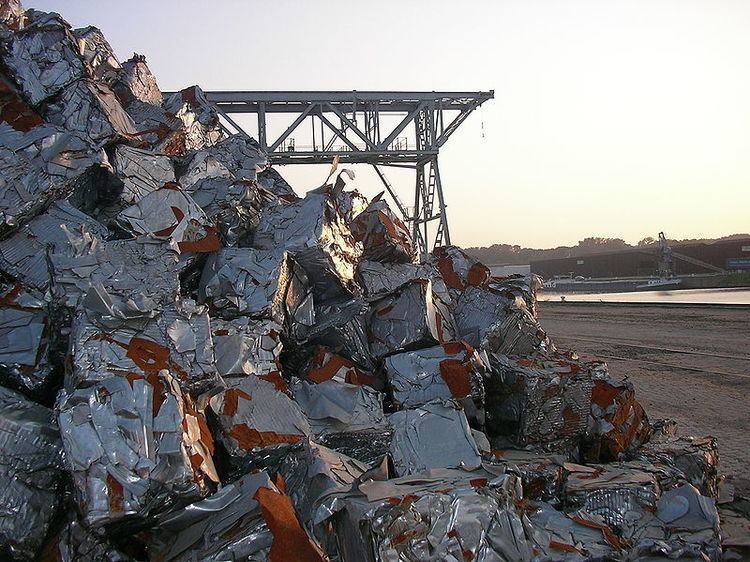 | ||
Ferrous metals are able to be recycled, with steel being one of the most recycled materials in the world. Ferrous metals contain an appreciable percentage of iron and the addition of carbon and other substances creates steel.
Contents
Description
In the United States, steel containers, cans, automobiles, appliances, and construction materials contribute the greatest weight of recycled materials. For example, in 2008, more than 97% of structural steel and 106% of automobiles were recycled, comparing the current steel consumption for each industry with the amount of recycled steel being produced (the late 2000s recession and the associated sharp decline in automobile production in the US explains the over-100% calculation). A typical appliance is about 75% steel by weight and automobiles are about 65% steel and iron.
The steel industry has been actively recycling for more than 150 years, in large part because it is economically advantageous to do so. It is cheaper to recycle steel than to mine iron ore and manipulate it through the production process to form new steel. Steel does not lose any of its inherent physical properties during the recycling process, and has drastically reduced energy and material requirements compared with refinement from iron ore. The energy saved by recycling reduces the annual energy consumption of the industry by about 75%, which is enough to power eighteen million homes for one year. According to the International Resource Panel's Metal Stocks in Society report, the per capita stock of steel in use in Australia, Canada, the European Union EU15, Norway, Switzerland, Japan, New Zealand and the US combined is 7,085 kilograms (15,620 lb) (about 860 million people in 2005).
Basic oxygen steelmaking (BOS) uses 25–35% recycled steel to make new steel. BOS steel usually contains lower concentrations of residual elements such as copper, nickel and molybdenum and is therefore more malleable than electric arc furnace (EAF) steel and is often used to make automotive fenders, tin cans, industrial drums or any product with a large degree of cold working. EAF steelmaking uses almost 100% recycled steel. This steel contains greater concentrations of residual elements that cannot be removed through the application of oxygen and lime. It is used to make structural beams, plates, reinforcing bar and other products that require little cold working. Downcycling of steel by hard-to-separate impurities such as copper or tin can only be prevented by well-aimed scrap selection or dilution by pure steel. Recycling one metric ton (1,000 kilograms) of steel saves 1.1 metric tons of iron ore, 630 kilograms of coal, and 55 kilograms of limestone.
Types of scrap used in steelmaking
United States
As of 2008, more than 83% of steel was recycled in the United States. It is the most widely recycled material; in 2000, more than 60 million metric tons were recycled.
